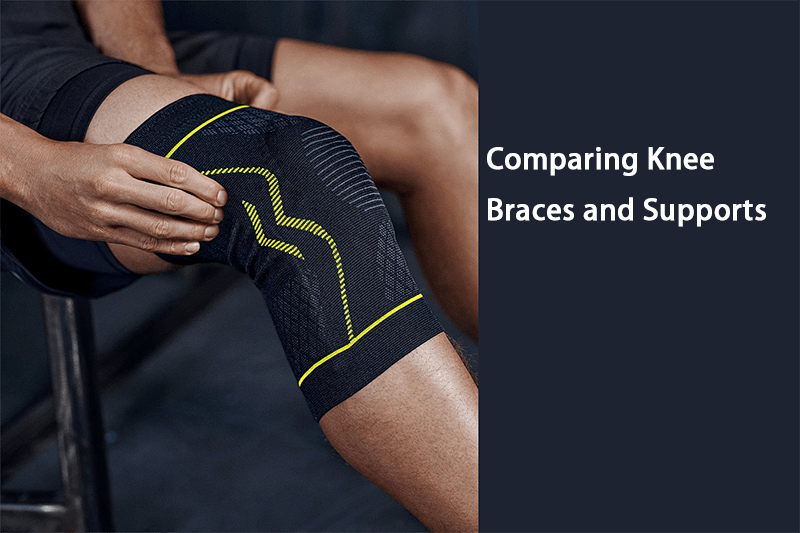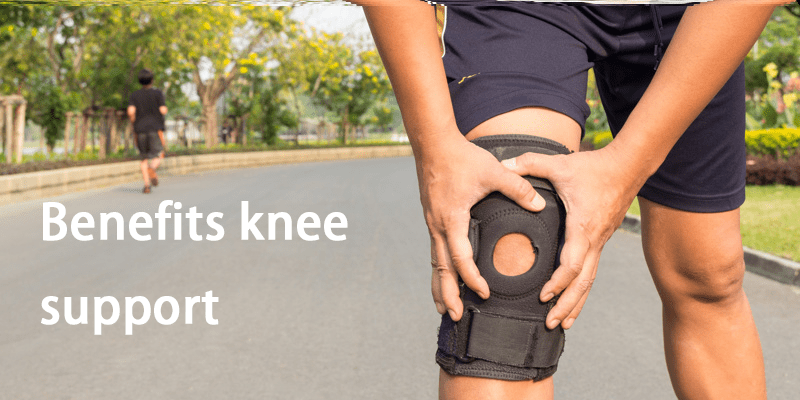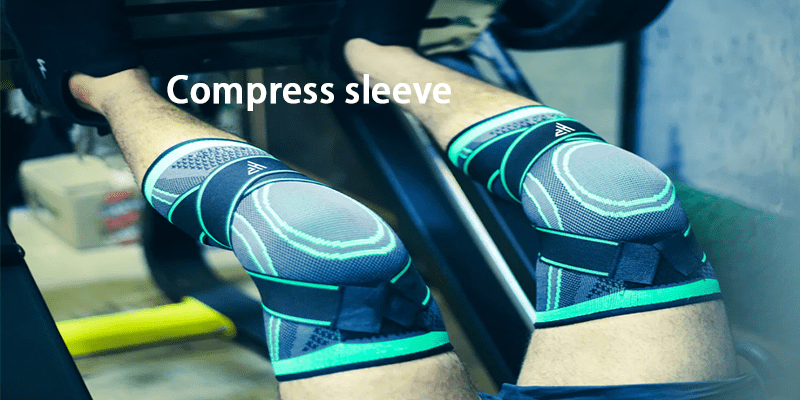Comparing Knee Braces and Supports
Comparing knee braces and supports to crack the code on finding the perfect fit for your knee health.

Understanding Knee Support
When it comes to knee support, knee braces play a vital role in providing stability and protection to the knee joint. Knee braces are designed to offer different levels of support depending on an individual’s needs. They can help alleviate pain, reduce pressure on damaged areas, promote proper alignment, and support the healing process of knee injuries [1].

Importance of Knee Braces
Knee braces are of significant importance, especially for individuals who engage in physical activities or suffer from knee problems. They provide extra support to the knee joint, helping to prevent further damage and stabilize the knee. This is particularly beneficial for athletes involved in contact sports where the risk of knee injuries is higher [1].
Research has shown that knee braces can provide substantial relief from pain, stabilize the knee joint, reduce pressure on damaged areas, promote proper alignment, and support the healing process of knee injuries [1]. By offering support and stability, knee braces can help individuals regain confidence in their knee’s functionality and reduce the risk of re-injury.

Benefits of Knee Support
The benefits of knee support provided by knee braces are numerous. Here are some key advantages:
- Pain Relief: Knee braces can help alleviate pain associated with knee injuries, arthritis, and other knee conditions. By providing compression and support, knee braces can help reduce discomfort and inflammation.
- Stability: Knee braces offer stability to the knee joint, especially during activities that involve lateral movements or sudden changes in direction. This stability can help prevent excessive twisting or stretching of the knee, reducing the risk of further injury.
- Protection: Knee braces act as a physical barrier, protecting the knee from external forces and potential impacts. This is particularly important for athletes participating in sports that involve physical contact or high-impact movements.
- Promotes Healing: By providing support and reducing strain on the injured or affected area, knee braces can aid in the healing process of knee injuries. They can help improve blood circulation, reduce swelling, and provide a conducive environment for recovery.
It’s important to note that knee braces should be chosen based on specific needs and under the guidance of healthcare professionals. The type of knee brace that will be most beneficial depends on factors such as the type and severity of the injury, the individual’s lifestyle, and the desired level of support.
Understanding the importance and benefits of knee support provided by knee braces is crucial for individuals seeking to protect their knees, manage pain, and maintain or regain an active lifestyle. Whether it’s for athletes looking for enhanced performance and injury prevention or individuals with knee conditions aiming to alleviate discomfort, knee braces can be a valuable tool in supporting overall knee health and well-being.
Types of Knee Braces
When it comes to knee support, there are various types of knee braces available, each serving different purposes and providing specific benefits. Let’s explore three common types: compression sleeves, hinged knee braces, and patella stabilizers.

Compression Sleeves
Compression sleeves are a popular choice for individuals with mild to moderate knee pain, arthritis, or tendonitis. These sleeves provide support by compressing the knee joint, which helps reduce swelling and increase stability. They are often made from elastic materials that fit snugly around the knee, providing a comfortable and supportive fit.
Compression sleeves are designed to improve blood circulation and promote faster recovery. They can be worn during daily activities, as well as during sports and exercise. These sleeves offer a lightweight and flexible option for knee support, allowing individuals to move freely while still benefiting from the therapeutic compression. To explore some of the best knee support products, check out our article on best knee support products 2024.
Hinged Knee Braces
Hinged knee braces are commonly used by athletes or individuals recovering from knee injuries. These braces provide enhanced stability and protection by incorporating metal hinges at the sides of the knee. The hinges allow controlled movement, preventing excessive lateral or rotational motion that could further damage the knee.
Hinged knee braces come in two main forms: rigid hinged braces and soft hinged braces. Soft hinged knee braces are suitable for mild to moderate support, while rigid hinged knee braces offer maximum support and protection, making them ideal for contact sports and more severe knee injuries. These braces often have adjustable straps to ensure a secure and customized fit.
Patella Stabilizers
Patella stabilizers, also known as patellar braces or knee straps, focus specifically on keeping the kneecap (patella) in place. They are designed to alleviate pain and provide support for conditions such as patellar tendonitis and patellofemoral pain syndrome.
Patella stabilizers typically consist of a strap or band that wraps around the knee, just below the kneecap. The strap applies gentle pressure to the patellar tendon, reducing stress on the knee joint. By stabilizing the patella, these braces help alleviate pain and improve overall knee function.
These braces are often lightweight and discreet, allowing individuals to wear them comfortably during sports, workouts, or everyday activities. It’s important to note that patella stabilizers may not be suitable for all knee conditions, so it’s advisable to consult with a healthcare professional to determine if they are the right option for your specific needs.
Understanding the different types of knee braces can help you make an informed decision when selecting the most appropriate support for your knees. Whether you opt for compression sleeves, hinged knee braces, or patella stabilizers, remember to consider your specific requirements and consult with a healthcare professional if necessary. By choosing the right knee brace, you can provide the necessary support and protection for your knees, promoting comfort and aiding in injury prevention and recovery.
Comparing Knee Brace Models
When it comes to choosing the right knee brace or support, there are several options available in the market. Let’s compare five popular knee brace models to help you make an informed decision based on your specific needs.
Bauerfeind Sports Knee Support NBA
The Bauerfeind Sports Knee Support NBA is a highly recommended knee brace for individuals without significant knee injuries. It features a silicone surround around the kneecap, providing compression, pain relief, and stabilizing the kneecap during activity. This knee support offers a combination of comfort and functionality, making it suitable for most individuals. For more details on this knee support, visit our article on the best knee support products 2024.
PROBALANCESPORT Professional Knee Compression Sleeve
With nearly 60,000 positive reviews on Amazon, the PROBALANCESPORT Professional Knee Compression Sleeve is a popular choice among users. This knee sleeve features gel pads that lift the fabric away from the kneecap, reducing pressure and pain while keeping the kneecap in place. It also includes built-in metal sides for improved stability and gel strips to prevent slipping down the leg. The NEENCA Professional Knee Compression Sleeve is designed to provide support and relief for individuals with various knee concerns.
The McDavid VOW Versatile Over Wrap Knee Wrap offers versatility and adjustability. Its wrap design allows for easy application and adjustment of compression levels and fit. The open kneecap design reduces pressure on the knee, while the side stabilizers provide support during various activities. The McDavid VOW Versatile Over Wrap Knee Wrap offers flexibility in sizing, making it suitable for a wide range of users.
Bauerfeind Sports Compression Knee Support
The Bauerfeind Sports Compression Knee Support is an excellent choice for individuals seeking compression benefits. This knee support improves blood flow, limits swelling, and provides moderate joint support. It features silicone bands to keep the support in place, ensuring a secure fit. The microfiber fabric used in the Bauerfeind Sports Compression Knee Support promotes breathability, making it comfortable for extended wear. This knee support is also machine washable for easy maintenance.
By comparing these knee brace models, you can find the one that best suits your needs. Whether you’re looking for general knee support, relief from pain, stability during sports activities, or compression benefits, there is a knee brace or support available to meet your requirements. Remember, it’s always a good idea to consult with a healthcare professional to determine the most suitable knee brace for your specific condition.
Selecting the Right Knee Support
When it comes to selecting the right knee support, there are several factors to consider. The choice of a knee brace depends on the level of support needed, recommendations from a doctor, the stage of recovery from surgery, the type of injury, and the required amount of knee movement [2]. Consulting a physician is essential to determine the appropriate knee brace based on factors such as the injured ligaments, rehabilitation plans, and the type of sport being played [3].
Considerations for Choosing a Knee Brace
When considering the right knee brace, the following factors should be taken into account:
- Type of Knee Brace: Knee braces are classified into different types, including prophylactic, functional braces, rehabilitative, and patellofemoral braces. Each type serves specific purposes such as protection during activities, support for injured knees, limiting harmful movements after injury or surgery, and aiding in patellofemoral pain syndrome [4].
- Level of Support: Knee braces offer different levels of protection ranging from Level 1 to 3+. Level 1 provides the least support but is most flexible, Level 2 offers more protection, and Level 3 provides the most support but limited movement. There is also an option for a 3+ Level for Maximum Protection. The level of support required depends on the severity of the injury and the desired level of stability [2].
- Type of Injury and Recovery Stage: The nature of the injury and the stage of recovery play a crucial role in selecting the right knee support. For example, individuals with a torn ACL usually require a complex knee brace for the first year of recovery. After that, a brace may not be necessary for low-level activities. It is important to follow the guidance of a physician in determining the appropriate knee brace based on the specific injury and recovery stage [5].
Factors Influencing the Decision
In addition to the considerations mentioned above, there are other factors that can influence the decision when selecting a knee brace:
- Sport or Activity: The type of sport or activity you engage in can impact the choice of knee brace. For example, football players may opt for knee braces to prevent injury due to the pressure on their knees from sharp turns and lateral movements in the sport [3].
- Comfort and Fit: A knee brace should fit properly and be comfortable to wear for extended periods. It should provide adequate support without restricting movement excessively. Ensuring the right size and fit is crucial for the effectiveness of the knee brace in providing the desired support.
- Quality and Durability: Choosing a knee brace from a reputable brand known for producing high-quality products can ensure durability and long-term performance. Researching customer reviews and ratings can provide insights into the quality of different knee brace models.
- Price: Consider the cost of the knee brace and balance it with the desired features and level of support needed. While cost is an important factor, it is essential to prioritize the effectiveness and suitability of the knee brace for your specific requirements.
By carefully considering these factors, you can select the right knee support that meets your needs, provides the desired level of support, and contributes to your overall knee health and well-being.
Practical Uses of Knee Braces
Knee braces serve various practical purposes and are widely used for different conditions and situations. Let’s explore some common practical uses of knee braces, including their benefits for athletes, arthritis sufferers, and individuals recovering from injuries.
Knee Braces for Athletes
For athletes, knee braces play a crucial role in providing extra support to the knee joint, helping to prevent further damage and stabilize the knee. They are particularly beneficial for athletes participating in contact sports and activities that involve sharp turns and lateral movements, which can put significant pressure on the knees.
Wearing knee braces can help athletes reduce the risk of injuries and continue engaging in physical activity. Football players, for example, often wear knee braces to protect their knees from the strain caused by the fast-paced, high-impact nature of the sport. Knee braces provide added stability and support, allowing athletes to perform at their best while minimizing the risk of knee-related injuries [3].
Knee Braces for Arthritis
Individuals suffering from arthritis, particularly osteoarthritis, can find relief through the use of knee braces. Knee braces designed for arthritis help to alleviate pain, reduce inflammation, and provide additional support to the affected joint.
One example is the unloader brace, which is specifically designed to “unload” stress caused by arthritis in the inner knee. This type of knee brace applies pressure on the thigh bone to bend away from the painful area, relieving pain and reducing the impact on the arthritic joint [3]. While knee braces can offer pain relief and support, it’s important to consult with a healthcare professional to determine the most appropriate type of knee brace for individual needs.
Knee Braces for Injury Recovery
Knee braces play a crucial role in the recovery process for individuals with knee injuries, particularly those with an anterior cruciate ligament (ACL) tear or other knee-related injuries. Different types of knee braces offer structural support and aid in the rehabilitation process.
Functional braces are often prescribed to provide stability and support during physical activity for individuals with ACL tears or other ligament injuries. Rehabilitative braces are used during the recovery phase after surgery or injury to limit movement and protect the knee. Prophylactic braces, on the other hand, are designed to prevent injuries and are commonly used by athletes participating in high-risk sports.
By wearing knee braces during the recovery period, individuals can protect the injured knee, reduce pain and swelling, and provide structural support to aid in the healing process [3]. It’s important to consult with a healthcare professional to determine the most appropriate type of knee brace based on the specific injury and recovery needs.
Whether for athletes, arthritis sufferers, or individuals recovering from injuries, knee braces provide valuable support, stability, and pain relief. By understanding the practical uses of knee braces and consulting with healthcare professionals, individuals can make informed decisions about the most suitable knee support for their unique needs.
Customized Knee Support
When it comes to knee support, custom knee braces offer a personalized solution for individuals with specific needs. These braces are designed to provide a tailored fit and targeted support, making them ideal for those seeking a customized knee support option. Let’s explore the benefits of custom knee braces and the process of obtaining one.
Benefits of Custom Knee Braces
Custom knee braces offer several advantages over off-the-shelf knee braces. Here are some key benefits:
- Personalized Fit: Custom knee braces are created based on individual measurements of the knee, ensuring a precise and comfortable fit. This personalized fit maximizes the effectiveness of the brace in providing support and stability.
- Tailored Support: Custom knee braces are designed to address specific conditions or injuries, such as ACL tears or knee instability. By targeting the affected area, these braces provide the necessary support for optimal recovery and protection.
- Enhanced Performance: Custom knee braces can help athletes perform at their best by providing the right balance of support and mobility. These braces are designed to accommodate the unique demands of various sports and activities, allowing athletes to move with confidence.
- Improved Comfort: Custom knee braces are constructed with high-quality materials and advanced technology to ensure comfort during extended wear. The customized fit minimizes discomfort and irritation, allowing individuals to wear the brace for longer periods without discomfort.
- Long-Term Durability: Custom knee braces are built to last, using durable materials that withstand regular use and provide ongoing support. This durability ensures that individuals can rely on their brace for extended periods, even during the recovery process.
Process of Getting a Custom Knee Brace
Obtaining a custom knee brace typically involves the following steps:
- Consultation: The process begins with a consultation with a healthcare professional, such as a physician or orthopedic specialist. They will assess your specific needs, examine your knee, and determine if a custom knee brace is the right option for you.
- Measurement and Evaluation: If a custom knee brace is recommended, the healthcare professional will take precise measurements of your knee to ensure an accurate fit. They may also evaluate your range of motion and perform diagnostic tests if necessary.
- Brace Design and Fabrication: Using the measurements and evaluation results, the custom knee brace will be designed and fabricated specifically for you. Skilled technicians or specialized companies will create the brace based on the healthcare professional’s specifications.
- Fitting and Adjustment: Once the custom knee brace is ready, you will have a fitting appointment with the healthcare professional. They will ensure that the brace fits correctly and make any necessary adjustments for optimal comfort and support.
- Education and Follow-Up: The healthcare professional will provide instructions on how to properly wear and care for your custom knee brace. They may also schedule follow-up appointments to monitor your progress and make any further adjustments if needed.
It’s important to note that custom knee braces are typically recommended for specific conditions, such as ACL tears or post-surgical rehabilitation. Consulting with a healthcare professional is essential to determine if a custom knee brace is the right choice for your individual needs. For more information on knee support options, including off-the-shelf braces, compression sleeves, and hinged knee braces, refer to our previous sections.
By opting for a custom knee brace, you can benefit from a personalized fit, targeted support, and enhanced comfort. The process of obtaining a custom knee brace involves consultation with a healthcare professional, precise measurements, brace design and fabrication, fitting and adjustment, and ongoing education and follow-up. With a custom knee brace, you can confidently pursue your activities while receiving the optimal support and protection your knee needs.
